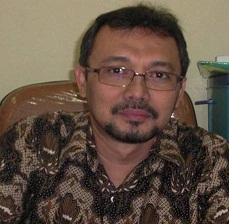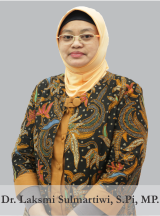Physics Oseanography Around Artificial Reef On The Pantai Of Damas, Trenggalek District, East Java
Downloads
Damage to coral reefs is generally caused by destructive fishing activities, they were the usega of explosives, cyanide toxic materials, coral mining for building materials, anchor boat anchors, and the results of sedimentation. Efforts to speed up the process of coral reef recovery, several methods of rehabilitation that can be done include coral transplantation and sinking of artificial reefs. The artificial reef is an alternative to reduce the pressure caused by fishing and destruction of natural coral reefs through the creation of new productive fishing grounds. The purpose of this study was to determine the relationship of water parameters (physical oceanography) for biota around artificial reefs based on Geographic Information Systems. The results of identification of oceanographic parameters in the waters of Damas Beach, Trenggalek Regency consist of: (a). depths range from 0-45 meters, (b). brightness ranges from 2 - 6 meters, (c). water temperature ranges from 25.18-29.59ºC, (d). water turbidity ranges from 0.3-4.32 NTU, (e). type of substrate base waters of Damas Beach fine black sand, (f). current speed ranges from 0.1-0.4 m/s, (h). the average wave height of Damas Beach in the morning, afternoon and evening is 5.6 cm, 8.14 cm and 6.2 cm, (i). the total suspended solid waters of Damas Beach range from 35-351 mg/L. The physical oceanographic parameters are still safe for the growth and development of biota in the waters of Damas Beach, Trenggalek Regency.
As-Syakur, A. R., & Wiyanto, D. B. (2016). Studi kondisi hidrologis sebagai lokasi penempatan terumbu buatan di Perairan Tanjung Benoa Bali. Jurnal Kelautan, 9(1):85-92.
Dahuri, R. (2003). Keanekaragaman hayati laut. Jakarta: PT Gramedia Pustaka Utama.
Erftemeijer, P. L., Riegl, B., Hoeksema, B. W., & Todd, P. A. (2012). Envi-ronmental impacts of dredging and other sediment disturbances on corals: a review. Marine Pollution Bulletin, 64(9): 1737-1765.
Fattah, M. (2017). Penenggelaman terumbu buatan. Malang: Program Studi Sosial Ekonomi Perikanan. FPIK. Universitas Brawijaya.
Guntur. (2011). Ekologi karang pada terumbu buatan. Jakarta: Ghalia Indonesia.
Helfinalis, Sultan, & Rubiman. (2012). Padatan tersuspensi total di perairan Selat Flores Boleng Alor dan Selatan Pulau Adonara Lembata Pantar. Jurnal Ilmu Kelautan, 17(3):148-153.
Jiyah, Sudarsono. B., & Sukmono, A. (2016). Studi distribusi total suspen-ded solid (TSS) di perairan Pantai Kabupaten Demak menggunakan citra landsat. Jurnal Geodesi Undip, 6(1):41-47.
Luthfi, O. M., & Anugrah, P. T. (2017). Distribusi karang keras (Scleractinia) sebagai penyusun utama ekosistem terumbu karang di Gosong Karang Pakiman, Bawean. Depik, 6(1):9-22.
Munasik. (2008, Nopember). Kondisi terumbu buatan berbahan beton pada beberapa perairan di Indonesia. Prosiding Musyawarah Nasional Terumbu Karang II, Jakarta.
Nybakken, J. W. (1992). Biologi laut: Suatu pendekatan ekologis. Terjemahan. Jakarta: Gramedia Pustaka Tama.
Pramono, G. H. (2008). Akurasi metode IDW dan kriging untuk interpolasi sebaran sedimen tersuspensi di Maros, Sulawesi Selatan. Forum Geografi, 22(1):145-158.
Prasetyo, A. B.T., Yuliadi, L. P. S., Astuty, S., & Prihadi, D. J. (2018). Keterkaitan tipe substrat dan laju sedimentasi dengan kondisi tutupan terumbu karang di perairan Pulau Panggang, Taman Nasional Kepulauan Seribu. Jurnal Perikanan dan Kelautan, 9(2):1-7.
Reppie, E. (2006). Desain, konstruksi dan kinerja (fisik, biologi dan sosial ekonomi) terumbu buatan sebagai nursery ground ikan-ikan karang. Disertasi. Bogor: Institut Pertanian Bogor.
Salam, A., Dodo, S., & Veggy, A. (2013). Kerusakan karang di perairan Pantai Molotabu Provinsi Gorontalo. Jurnal Ilmiah Perikanan dan Kelautan, 1(1):55-58.
Shodiqin, M. A. (2016). Studi total suspended solid dan transparansi perairan menggunakan citra satelit Worldview-2 sebagai faktor pembatas pertumbuhan terumbu karang. Skripsi. Surabaya: Jurusan Teknik Geomatika. Fakultas Teknik Sipil dan Peren-canaan. ITS.
Sunarto. (2017). Kajian kebutuhan pembangunan Pelabuhan Prigi di Kabupaten Trenggalek. Jurnal Pene-litian Transportasi Laut, 19:69-75.
Tamam, B., Arisandi, A., & Saleh, M. (2013). Inventarisasi terumbu karang di Pulau Mamburit Kepulauan Kangean Kabupaten Sumenep. Jurnal Kelautan, 6 (2):120-127.
Tanamal, Y.,Tuhumury, S.F., & Sangaji, M. (2019). Analisis kesesuaian dan daya dukung daerah rehabilitasi laguna besar dan slope reef laguna Kipuo, Negeri Ihamahu. Jurnal TRITON, 15(1):21-29.
Wibawa, I.G.N.A., & Luthfy, O. M. (2017). Kualitas air pada ekosistem terumbu karang di Selat Sempu, Sendang Biru, Malang. Jurnal Segara, 13(1):25-35.
Wibisono, M. S. (2005). Pengantar ilmu kelautan. Jakarta: PT. Gramedia Widiasarana Indonesia.
Yeemin, T., Sutthacheep, M., & Pettongma, R. (2006). Coral reef restoration projects in Thailand. Ocean & Coastal Management, 49(9): 562-575.
Yuspardianto. (1998). Studi tentang efektivitas terumbu karang buatan sebagai Fish Aggregating Device di Perairan Pulau Sauh, Sumatera Barat Tesis. Bogor: Program Pascasarjana, Institut Pertanian Bogor.
Yusuf, M., Handoyo, G., Muslim, Wulandari S. Y., & Setiyono, H. (2012). Karakteristik pola arus dalam kaitannya dengan kondisi kulaitas perairan dan kelimpahan fito-plankton diperairan kawasan taman nasional laut nasional Laut Karimunjawa. Buletin Oseonografi Marina, 1:63-74
Copyright (c) 2021 Journal of Marine and Coastal Science

This work is licensed under a Creative Commons Attribution-NonCommercial-ShareAlike 4.0 International License.













